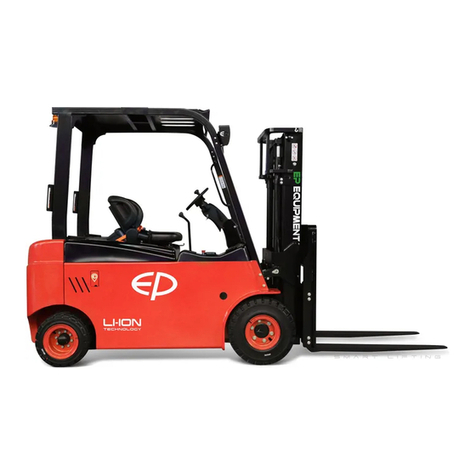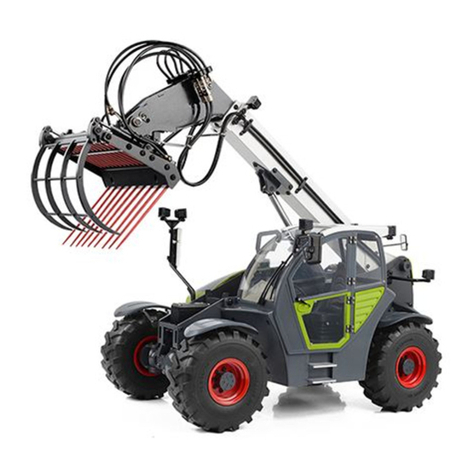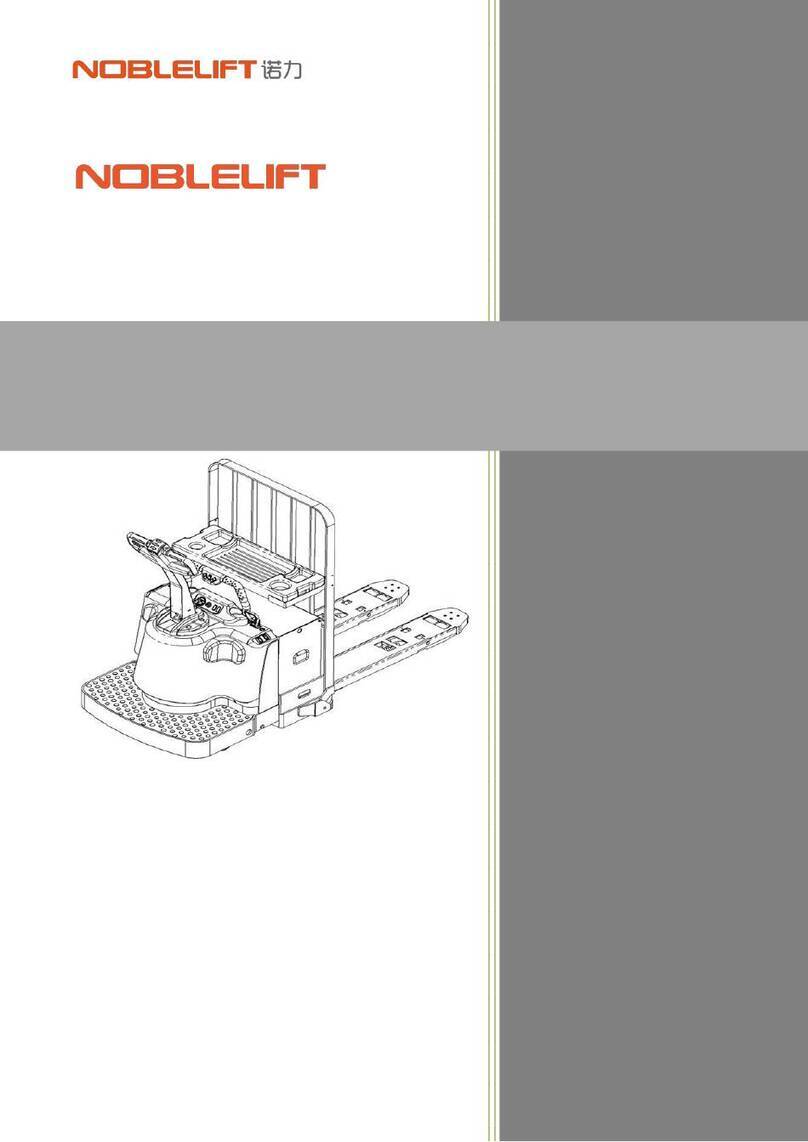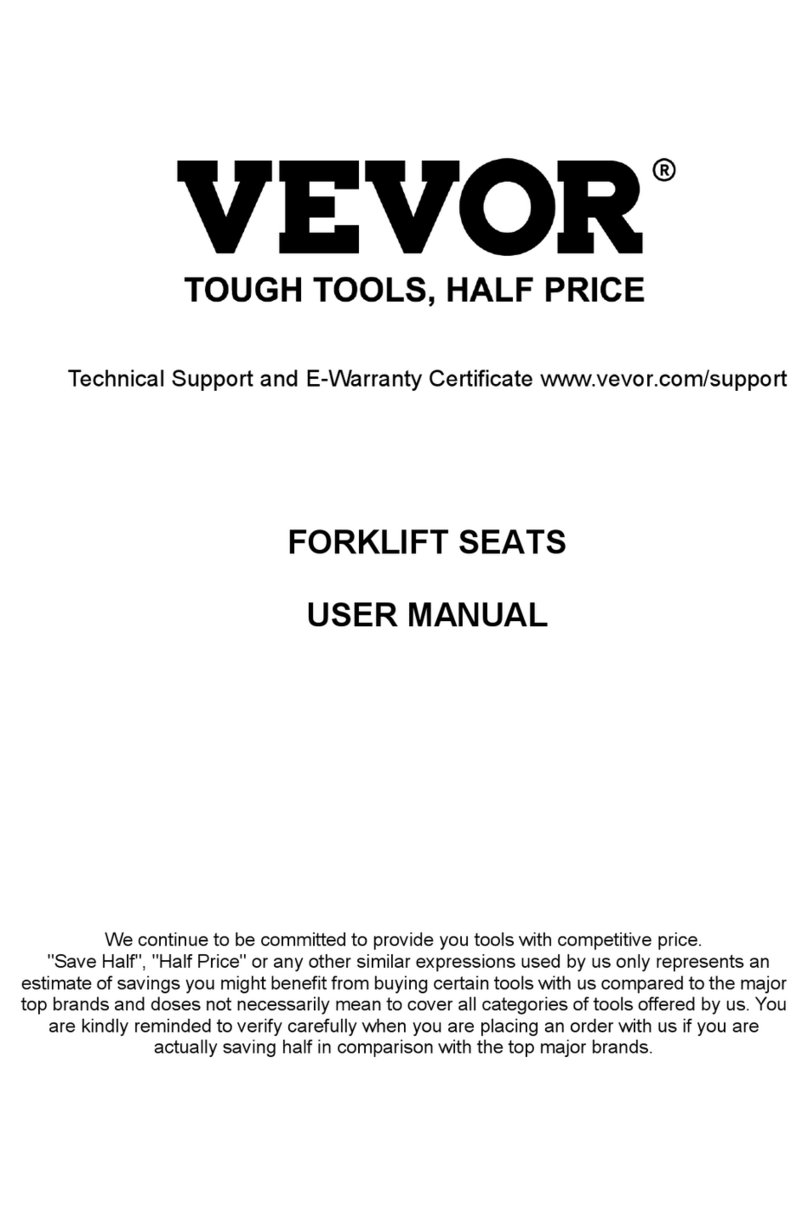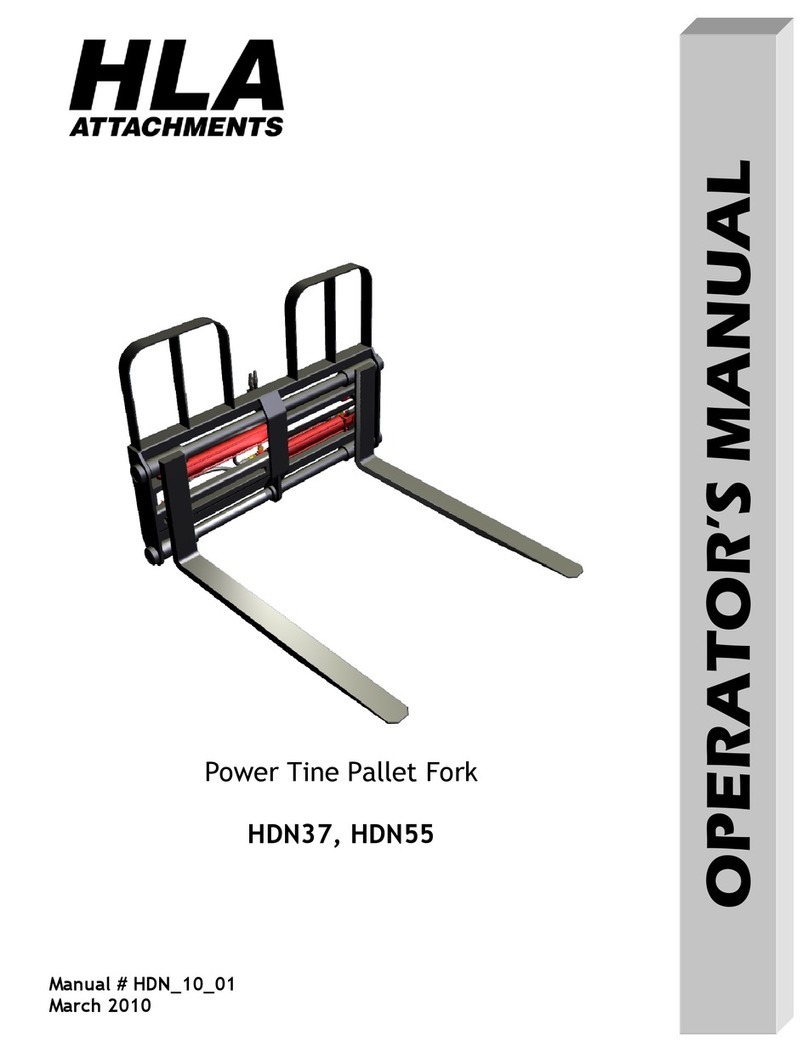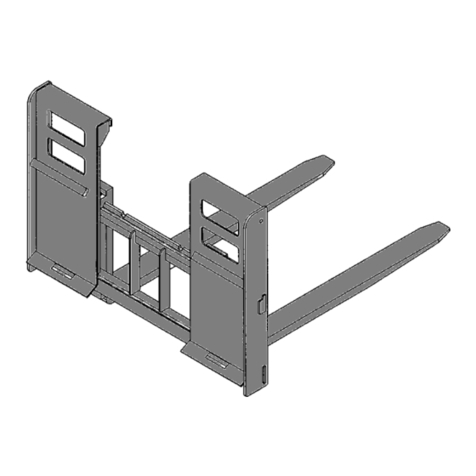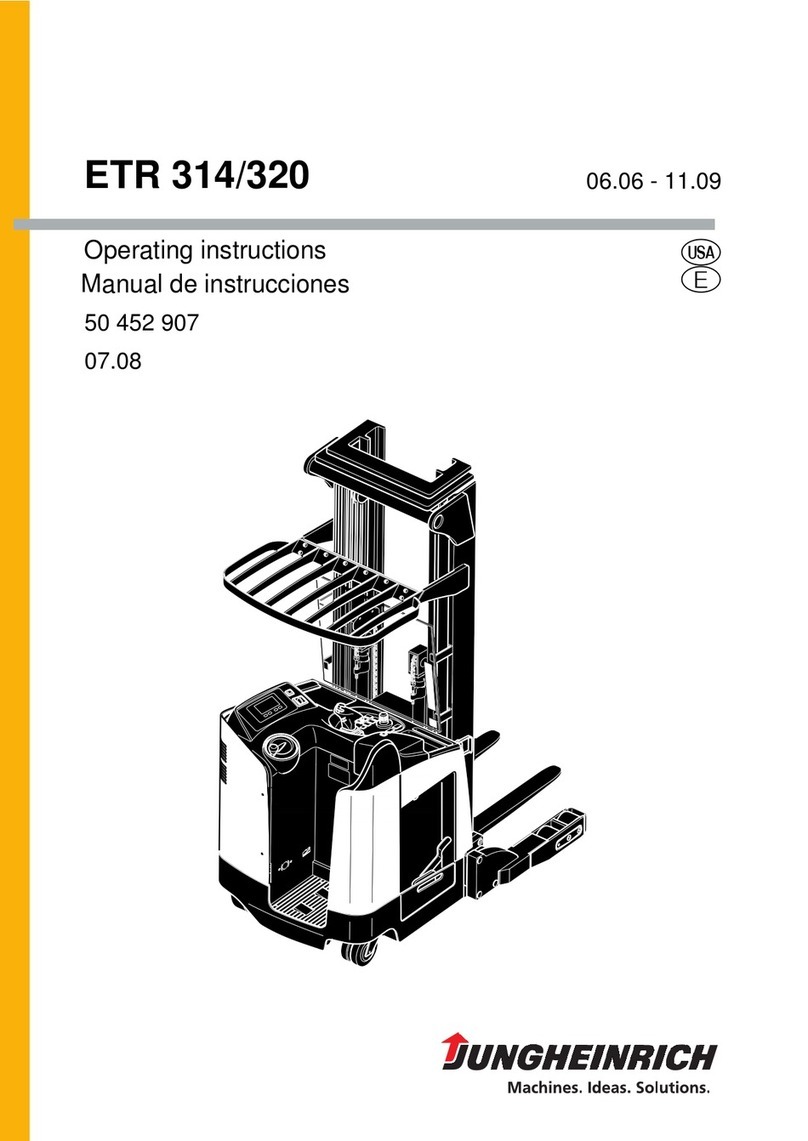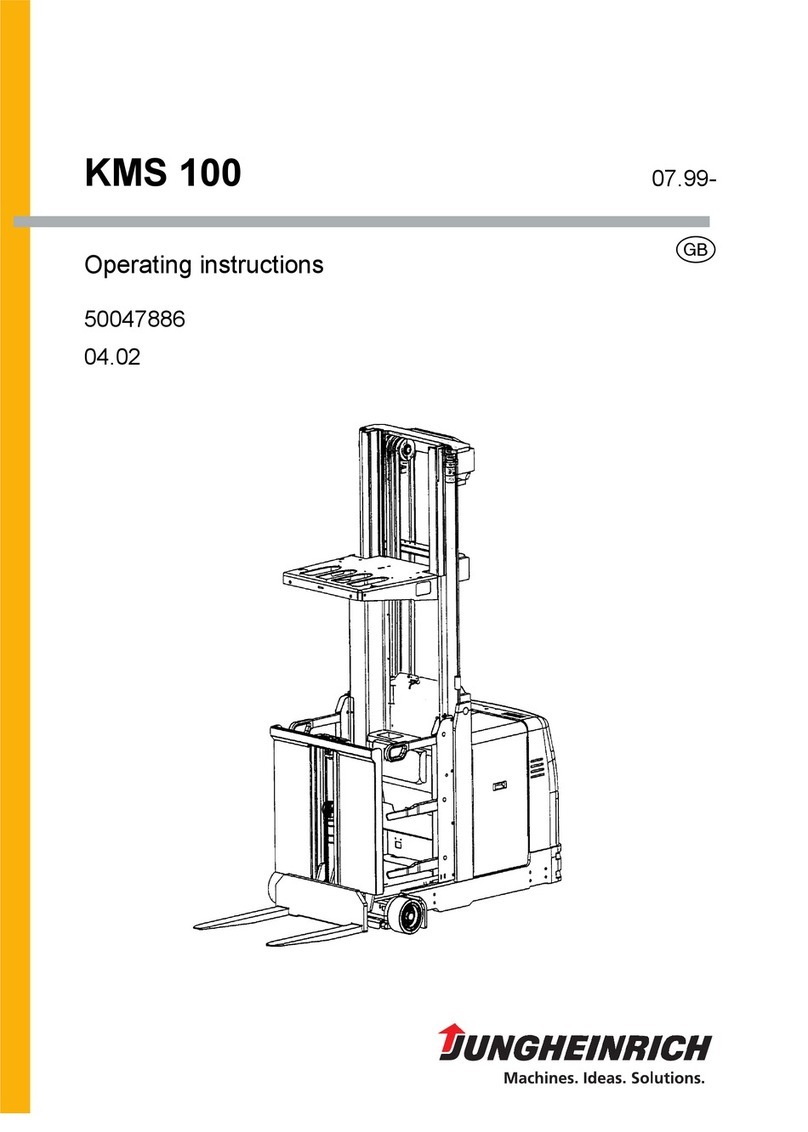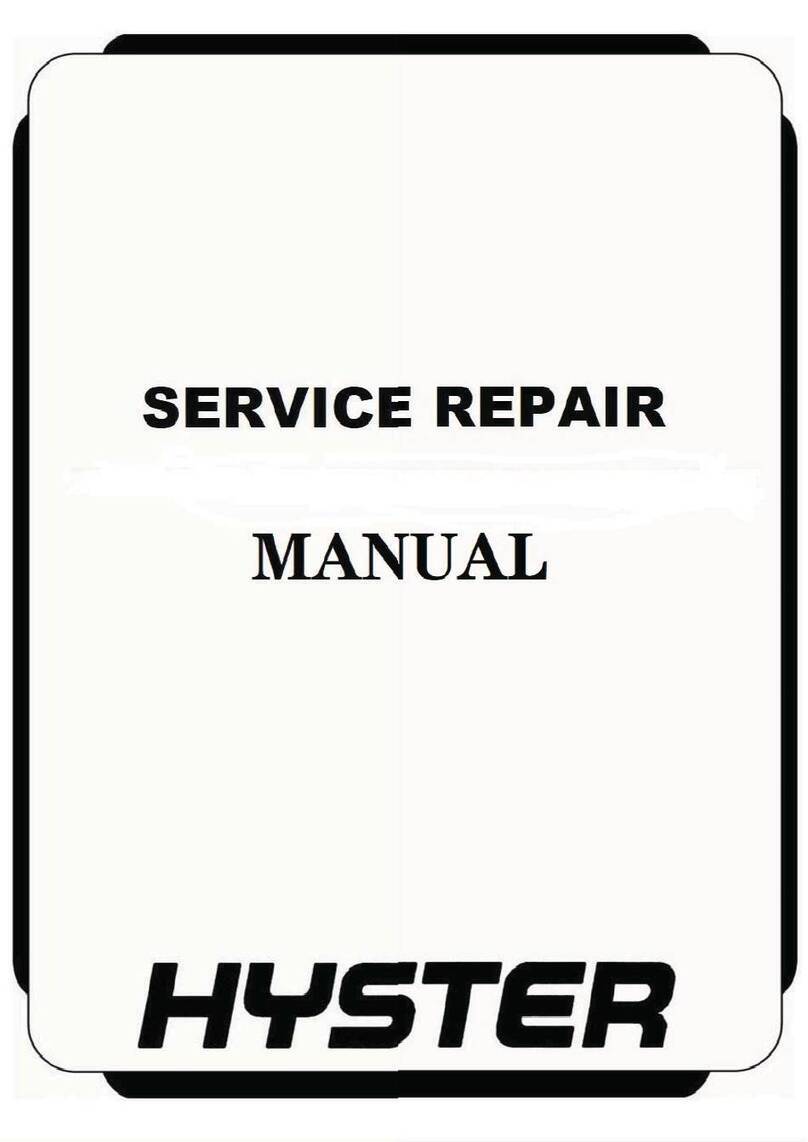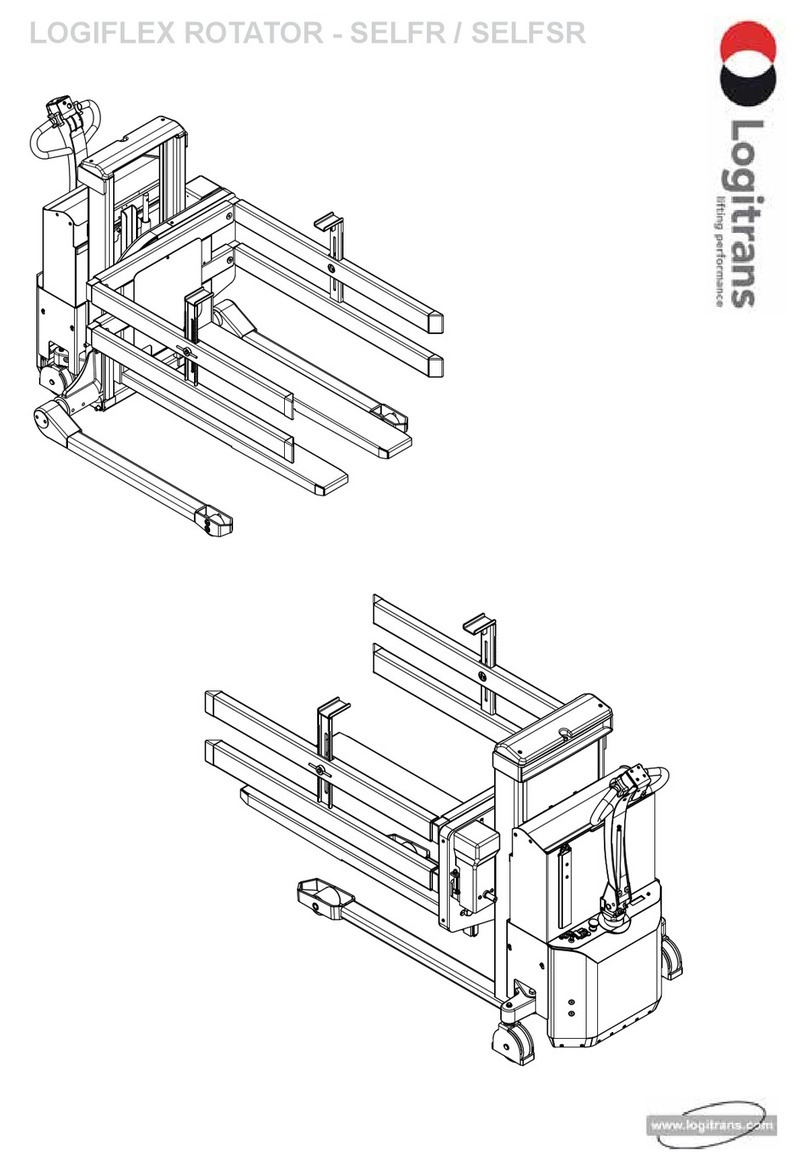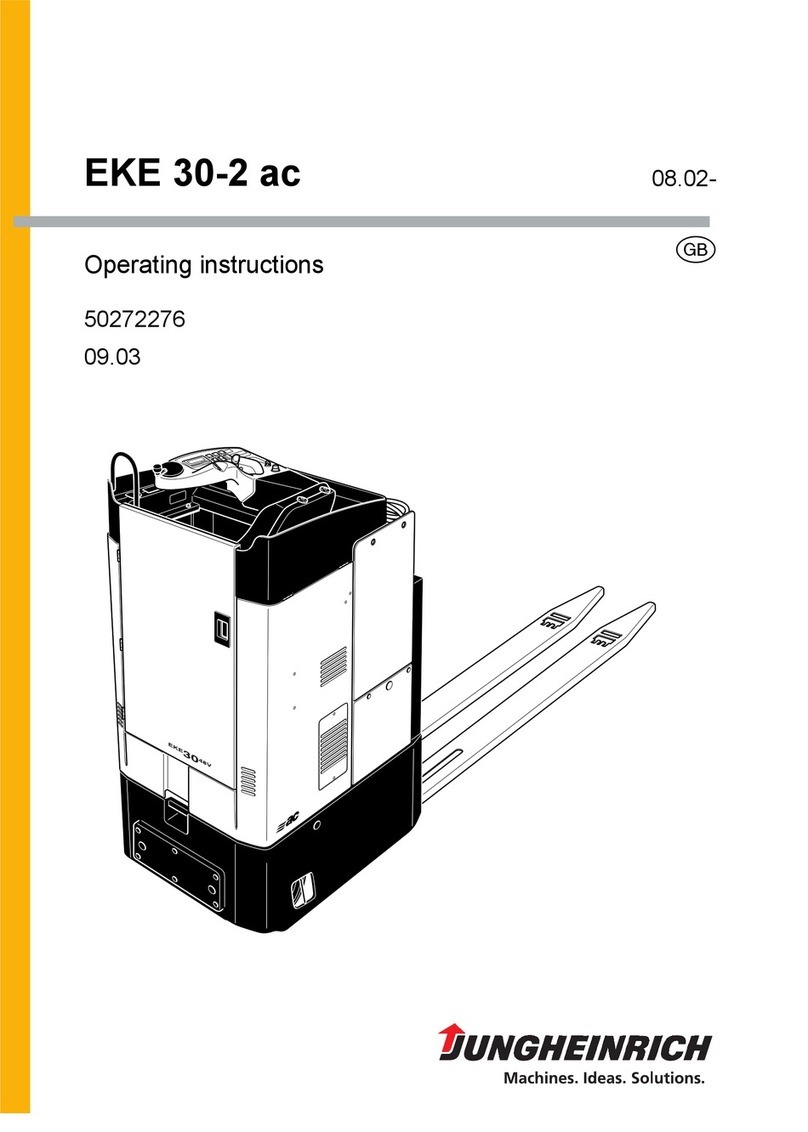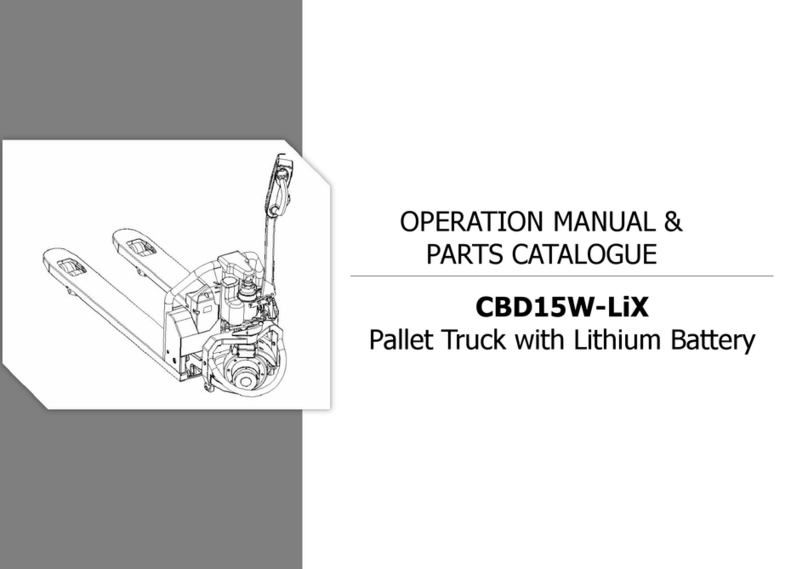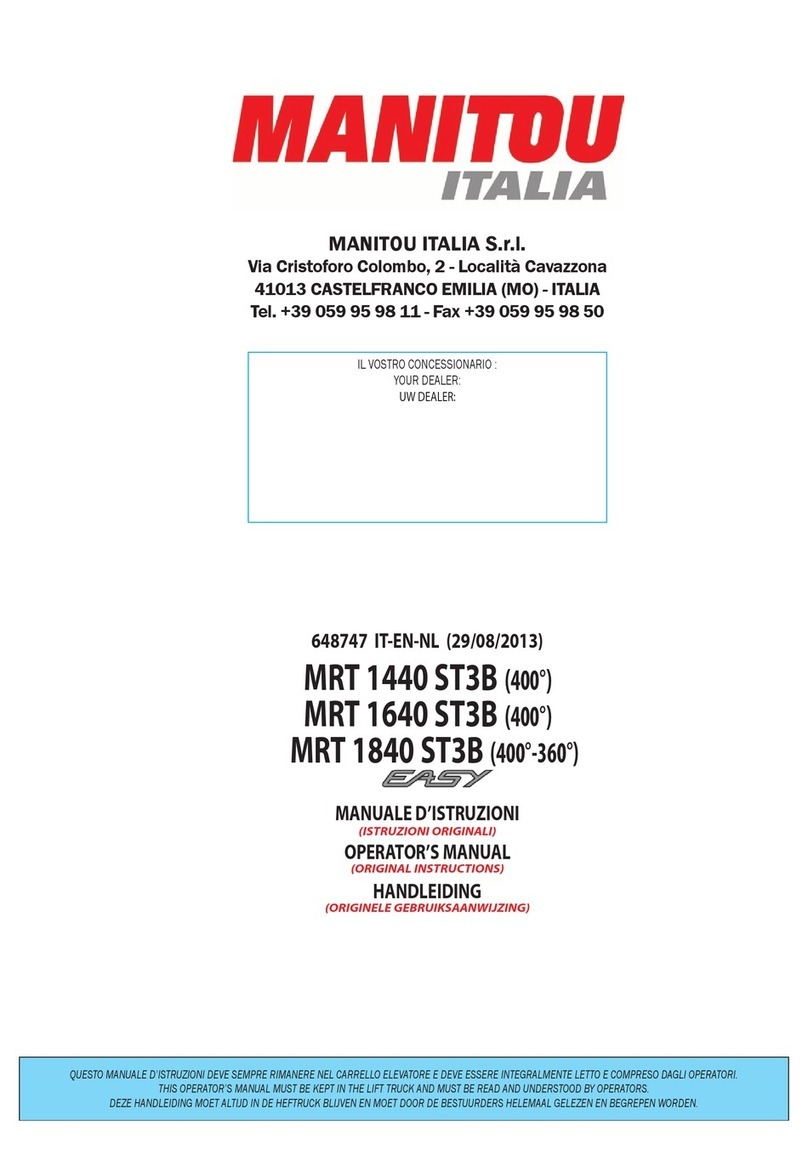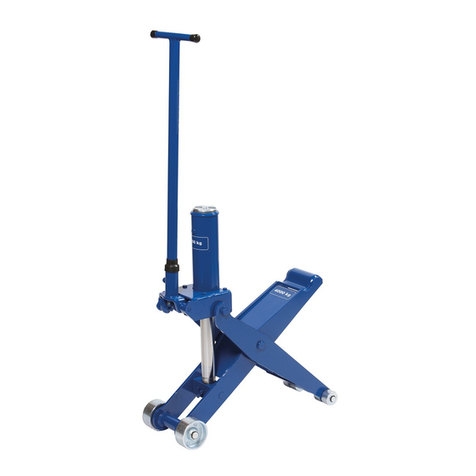EP Equipment EPL1531 User manual

Original Instruction Part No. 508000003738
V1 07/2020
Operation Manual
EPL1531

i
Foreword
The present operation manual are designed to provide sucient instruction for the safe operation
of the industrial truck. The information is provided clearly and concisely.
Our trucks are subject to ongoing development. EP reserves the right to alter the design,
equipment and technical features of the system. No guarantee of particular features of the truck
should therefore be assumed from the present operation manual.
Safety notices and text markups
Safety instructions and important explanations are indicated by the following graphics:
Please strictly adhere to these safety instructions to avoid personal injury or major damage to
equipment.
Please pay attention to the important safety instructions.
Pay attention to Instructions.
EP EQUIPMENT CO., LTD
Address: XIAQUAN, DIPU, ANJI, ZHEJIANG, CHINA
Tel: + 86-571-28023920
Website: www.ep-ep.com
Email: [email protected]
ALL RIGHTS RESERVED
2020.7 15st EDITION

Declaration
EP EQUIPMENT CO., LTD
Address: XIAQUAN, DIPU, ANJI, ZHEJIANG, CHINA
We declare that the
Industrial truck: according to these operation manual
Type: according to these operation manual
complies with the most recent version of Machinery Directive 2006/42/EC.
Personnel authorised to compile the technical documents:
See EC/EU Declaration of Conformity
EP EQUIPMENT CO., LTD
EC/EU Declaration of Conformity
The manufacturer declares that this industrial truck complies with the EC Machinery Directive
and the provisions of other applicable EC/EU directives eective at the time of sale. This can be
verified by means of the EC/EU Declaration of Conformity and the relevant certification label on the
nameplate.
The industrial truck is supplied with the EC/EU Declaration of Conformity document. This
declaration proves that this truck complies with the requirements of the EC Machinery Directive.
Unauthorised modification or additional installation of equipment to the structure of the industrial
truck may aect its safety, and will therefore invalidate the EC/EU Declaration of Conformity.
The EC/EU Declaration of Conformity must be carefully conserved and kept ready to be presented
to the relevant authorities. If this industrial truck is sold, this declaration document must be handed
over to the new owner.
Legal requirements for marketing

A Application ............................................................................................................................A1
B Truck Description .................................................................................................................B1
1.1 Application ..........................................................................................................................B1
1.2 Truck assemblies ................................................................................................................B2
1.2.1 Control handle .................................................................................................................B3
1.2.2 Key switch .......................................................................................................................B4
1.2.3 Charging indicator ...........................................................................................................B4
1.2.4 Emergency reverse button ..............................................................................................B5
1.3 Identification points and data plates ...................................................................................B6
1.3.1Truck data plate ................................................................................................................B7
1.4 Standard version specifications ..........................................................................................B8
1.4.1Performance data for standard trucks ..............................................................................B8
1.4.2 Dimensions ......................................................................................................................B9
C Safety ...................................................................................................................................C1
1.1 Before operation .................................................................................................................C1
1.2 Operating position ..............................................................................................................C1
1.3 Travel ..................................................................................................................................C2
1.4 Battery safety......................................................................................................................C3
1.5 EMC-Electromagnetic compatibility ...................................................................................C4
D Transport And Commissioning .............................................................................................D1
1.1Truck transport ....................................................................................................................D1
1.2 Operating the truck without its own drive system ...............................................................D1
1.3 Using the truck for the first time ..........................................................................................D2
1.4 Break-in period precautions................................................................................................D2
E Operation .............................................................................................................................E1
1.1 Safety regulations for the operation of pallet trucks ...........................................................E1
1.2 Operate and run the truck...................................................................................................E1
1.2.1 Turning the truck on and o ............................................................................................E1
1.2.2 Driving, steering, braking .................................................................................................E2
1.2.3 Loading ............................................................................................................................E3
1.3 Raising and lowering the forks ...........................................................................................E5
1.4 Parking the truck securely ..................................................................................................E5
1.5 Using the truck on a slope ..................................................................................................E6
1.5.1 Starting on a slope...........................................................................................................E6
1.6 Hoisting the truck(See 1.3 dentification points and data plates) ........................................E7
1.7 Operator daily checklist ......................................................................................................E8
F Battery Maintenance & Charging .........................................................................................F1
1.1 Safety regulations for handling acid batteries ....................................................................F1
1.2 Battery type & dimension....................................................................................................F1
1.3 Charging the battery ...........................................................................................................F1
1.4 Battery removal and installation .........................................................................................F2
1.5 Daily maintenance ..............................................................................................................F3
1.6 Storage ...............................................................................................................................F3
1.7 Transportation.....................................................................................................................F4
Table of contents
Pg.

G Pallet Truck Maintenance ....................................................................................................G1
1.1 Operational safety and environmental protection ...............................................................G1
1.2 Maintenance safety regulations ..........................................................................................G1
1.3 Servicing and inspection.....................................................................................................G2
1.3.1Maintenance checklist ......................................................................................................G3
1.3.2 Lubrication points ............................................................................................................G4
1.4 Maintenance Instructions....................................................................................................G6
1.4.1Prepare the truck for maintenance and repairs ................................................................G6
1.4.2 Remove the cover ...........................................................................................................G6
1.4.3 How to add oil ..................................................................................................................G7
1.4.4 How to add grease ..........................................................................................................G7
1.4.5 Checking the fuses ..........................................................................................................G7
1.4.6 Recommissioning ............................................................................................................G8
1.5 Decommissioning the industrial truck .................................................................................G8
1.5.1 Prior to decommissioning ................................................................................................G8
1.5.2 Restoring the truck to operation after decommissioning .................................................G8
1.6 Safety checks to be performed at regular intervals and following any unusual incidents G9
1.7 Final decommissioning, disposal ........................................................................................G9
1.8 Tire replacement .................................................................................................................G9
H Troubleshooting ...................................................................................................................H1
Pg.

REV. 07/2020
1A
A Application
The truck described in these operation manual is designed for transporting loads. It must be used,
operated and maintained according to the information presented in this operation manual. Any
other uses exceed the design scope and can lead to injury to persons or damage to equipment
and property. Above all, overloading caused by excessively heavy or unbalanced loads must be
avoided. The max. permissible load to be picked up is indicated on the nameplate or load curve
label shown on the truck. The truck must not be operated in spaces subject to fire or explosion
hazards, or in spaces where corrosive or very dusty atmospheres prevail.
Duties of the user: A “user” within the meaning of these operation manual is defined as any
natural or legal person who either uses the truck himself, or on whose behalf it is used. In special
cases (e.g. leasing or renting), the user is considered the person, who, in accordance with
existing contractual agreements between the owner and the user of the truck, is charged with the
observance of the operating duties.
The user must ensure that the truck is not abused and only used within its design scope and that
all danger to the operator, or third parties, is avoided. In addition to this, it must be ensured that
the relevant accident prevention regulations and other safety related provisions, as well as the
operating, servicing and maintenance guidelines, are observed. The user must also ensure that
all persons operating the truck have read and understood this operation manual.
If this operation manual is not observed, the warranty becomes void. The same applies if
improper works are carried out on the device by the customers and/or third parties without
permission of our customer service.
Adding attachments: Adding or fitting any attachments which will interfere with, or supplement,
the functions of the truck is permitted only after written approval by the manufacturer has been
obtained. If necessary, the approval of local authorities has to be obtained. Any approval obtained
from local authorities does not, however, make the approval by the manufacturer unnecessary.
Modication: If you want to use the truck for purposes that are not mentioned in the user manual,
please contact dealers accredited by EP. Any modification to your truck, in particular fitting of
equipment or conversion to the truck, is prohibited without the permission of the manufacturer.

REV. 07/2020 2A
Intended use
The truck is designed for transporting and stacking the loads indicated in the load capacity
diagram. Especially:
In accordance with the safety rules of your industry association
Other local regulations
In all cases, the people in charge, particularly operators and service personnel, must comply with
the specific approved rules for the use of industrial trucks.
The user, and not the manufacturer EP, is liable for any hazards caused by any application not
authorised by the truck manufacturer.
Please contact your authorised dealer if you want to use the truck for an application that is not
specified in this manual.
The truck must not be altered, especially by making modifications or installing attachments,
without the manufacturer's approval.
Improper use
The operating company or driver, and not the manufacturer, is liable if the truck is used in a
manner that is not permitted.One of the main causes of accidents is the driver ignoring or being
unaware of the basic safe operating practices of the truck.
The following basic safe operating practices must be observed to ensure the safety of operators
and others.Never operate the truck in environments with s potentially explosive atmosphere.
Never carry passengers.
Do not overload the truck. (by exceeding the rated load indicated on the load designation plate)
Overloading can aect braking distances, truck stability and the strength of the lift mast.
Do not pick up an o-centre load.
Do not stack loads or turn when driving on a ramp.
Do not operate the truck on loose or greasy surfaces.
Do not drive on uneven or obstructed surfaces. Never park the truck in a place that may obstruct
fire extinguishers, fire escapes or aisles.
Do not dismount from the truck while it is moving.
Do not leave the truck unattended when the load is raised.
Never leave the vehicle unattended on a ramp. When driving, do not place any part of your body
outside the confines of the truck, lean on the edge of the truck or attempt to jump onto another
truck or object.
Do not use the forks or any other part of the truck to push, pull or support items, unless the design
permits this.
•
•
•
•
•
•
•
•
•
•
•
•
•

REV. 07/2020
1
B
B Truck Description
Application
The truck is intended for transporting goods on a level oor. It can pick up pallets that are open
to the ground or trolleys.
Permissible application temperature range of truck -10°C to 40°C. Lithium-ion battery operation
application 0°C to 40°C.
The truck may only be operated in cold stores temporarily. If the truck remains too long in a
cold store,we recommend coid store equipment for the truck.
Only use the truck at altitudes not exceeding 2000 meters.
The walking, lifting and lowering devices, harnesses and components are IP55 dust and water-
resistant.
Trucks can only be operated in adequately illuminated working areas to avoid injuries. In case
of insucient light, an additional lighting equipment is needed to ensure that the driver can see
properly.
If you must travel on an incline, the gradients should be below A% at full load, or below B%
without a load.(For the value of A and B, refer to the Gradability in Performance Data Sheet)
There should be no risks of fire, explosion or corrosion in the working area, or too much dust.
Forks can only be operated in adequately illuminated working areas to avoid injuries or injuries.
In case of insucient light, an additional equipment is needed to run the fork lift truck.
1.1
i
NOTE

REV. 05/2020 2B
1 Control handle 6 Forks
2 Control lever 7 Emergency stop switch
3 Lift cylinder 8 Lowering lever
4 Driving wheel 9 Load wheels
5Battery Box
1.2 Truck assemblies

REV. 07/2020
3
B
Control handle1.2.1
Item Control / Display Function
1 "Horn" button Activates the horn.
2 "Lifting" button Press the lift button and hold. The forks will be lifted
to its maximum height and stop on its own.
3Lowering lever Pull the lowering lever and hold. The forks will be
lowered to its minimum height and stop on its own.
4Emergency reverse
switch
By pressing this switch, the vehicle starts to travel in
the opposite direction.
5 Drive switch Select the required driving direction and speed.
6 Creep speed switch
Keep the handle in the vertical state, and press creep
speed switch and drive switch at the same time, then
the vehicle will move at a low speed.
Fig1113-00006OM Fig1113-00006OM

REV. 05/2020 4B
The LED display (2) show battery residual
capacity.
The color of the LED (2) represent the
following conditions:
Component LED color Residual
capacity
Standard
battery
residual
capacity
Green 30-100%
Continuous
yellow 15-30%
Quick
ashing red
light(Flashing
period 2s)
7-15%
Slow ashing
red light
(Flashing
period 1s)
0-7%
The LED (1) remain green light lit under
normal, ashing show the failure state of truck.
(See section H Controller Error Message)
Charging indicator1.2.3
If the controller detects a battery failure,
ashes of LED(2)represent battery failure
information until the failure is remedied.
Details of failure information are shown as
below:
1.2.2 Key switch
Connect and interrupt the control
current.
When pulling out the key switch, the
control current of the truck will be
interrupted;
When inserting the key switch, the
control current of the truck will be
connected.
Key switch
•
•
Pulling out the key switch of a truck
before leaving can prevent the truck
from starting accidentally.
2

REV. 07/2020
5
B
Emergency reverse switch
To protect the operator from becoming pinned against an obstacle by the control handle,
an emergency reverse switch is provided at the end of the control handle. If this switch is
pressed during operation, the truck will move o in reverse. The mechanical brake will then
engage to stop the truck. The travel control must then be returned to neutral before the truck
can again be operated.
1.2.4
Under-voltage of single cell battery: The green light repeats in a cycle of flashing once in 1
second, pausing for 2 seconds and then ashing twice, pausing for 3 seconds.
Over-voltage of single cell battery: The green light repeats in a cycle of flashing once in 1
second, pausing for 2 seconds and then ashing three times, pausing for 3 seconds.
Short circuit protection: The green light repeats in a cycle of ashing once in 1 second, pausing
for 2 seconds and then ashing four times, pausing for 3 seconds.
Over-current protection: The green light repeats in a cycle of ashing once in 1 second, pausing
for 2 seconds and then ashing five times, pausing for 3 seconds.
Battery temperature is too high: The green light repeats in a cycle of ashing twice in 1 second,
pausing for 2 seconds and then ashing three times, pausing for 3 seconds.
Battery temperature is too low: The green light repeats in a cycle of ashing twice in 1 second,
pausing for 2 seconds and then ashing four times, pausing for 3 seconds.
Contactor-related failures: The green light repeats in a cycle of ashing three times in 1 second,
pausing for 2 seconds and then ashing four times, pausing for 3 seconds.
The yellow light ashes rapidly in 1 second when other failures happen.
•
•
•
•
•
•
•
•
When powered o, if the green light of power indicator is always on, it means that
the battery is in a balanced state, which is a normal phenomenon.

REV. 05/2020 6B
1.3 Identication points and data plates
Item Description Item Description
1 Hydraulic oil label 8 Anti pinch hand label
2 Charging trouble light label 9 Function label
5 Nameplate 10 Lithium-ion label
6 “Instructions” label 11 Type label
7 No riding label
Front
Right
Top
Left
1
2
6
7
8
9
10
11
4
5

REV. 07/2020
7
B
Truck data plate
For queries regarding the truck or ordering spare parts please quote the truck serial
number.
Item Description Item Description
1 MODEL TYPE 7 RATED DRIVE POWER
2 SERIAL NO. 8 BATTERY VOLTAGE
3 MANUFACTURE DATE 9 MAX BATTERY WEIGHT
4 RATED CAPACITY 10 MIN BATTERY WEIGHT
5 LOAD CENTER 11 UNLADEN MASS WITHOUT
BATTERY
6 LIFT HEIGHT 12 UNLADEN MASS WITH BATTERY
1.3.1
1
2
3
4
5
6
7
8
9
10
11
12

REV. 05/2020 8B
Standard version specications
Technical specification details in accordance with VDI 2198. Technical modifications and
additions reserved.
Performance data for standard trucks
1.4
1.4.1
Distinguishing mark
1.1 Manufacturer EP
1.2 Model
designation
EPL1531
1.3 D r i v e u n i t Battery
1.4 Operator type Pedestrian
1.5 rated capacity Q lb. kg 1500
1.6 Load center
distance
c in. mm 600
1.8 Load distance x in. mm 950(880)
1.9 Wheelbase y in. mm 1190/1120
Weight
2.1 Service weight
(include battery)
lb. kg 120
2.2 Axle loading,
laden driving side/
loading side
lb. kg 480/1140
2.3 Axle loading,
unladen driving
side/loading side
lb. kg 90/30
Types,Chassis
3.1 "Tyre type driving
wheels/loading
wheels"
PU/PU

REV. 07/2020
9
B
3.2 Tyre size, driving
wheels(diameter×width)
in. mm Ф210x70
3.3 Tyre size, loading
wheels(diameter×width)
in. mm Ф80x60
(Ф74x88)
3.5 Wheels, number driving,
caster/loading (x=drive
wheels)
in. mm 1x, 4(1x, 2)
3.6 Track width, front,driving
side
b10 in. mm /
3.7 Track width,rear,loading
side
b11 in. mm 410 (535)
Dimensions
4.4 Lift height h3 in. mm 115
4.9 Height drawbar in driving
position min./max.
h14 in. mm 750/1190
4.15 Lowered height h13 in. mm 80
4.19 Overall length l1 in. mm 1540
4.20 Length to face of forks l2 in. mm 400
4.21 Overall width b1/ b2 in. mm 685
4.22 Fork dimensions s/ e/ l in. mm 50x150x1150
4.25 Distance between fork-
arms
b5 in. mm 560(685)
4.32 Ground clearance, center
of wheelbase
m2 in. mm 30
4.34.1 Aisle width for pallets 1000
× 1200 crossways
Ast in. mm 2145
4.34.2 Aisle width for pallets 800
× 1200 lengthways
Ast in. mm 2050
4.35 Turning radius Wa in. mm 1330
Performance data
5.1 Travel speed, laden/
unladen
km/ h mph km/h 4.5/5
5.2 Lifting speed, laden/
unladen
fpm m/ s 0.017/0.020

REV. 05/2020 10B
5.3 Lowering speed, laden/
unladen
fpm m/ s 0.09/0.06
5.8 Max. gradeability, laden/
unladen
% 6\16
5.10 Service brake type Electromagnetic
Electric-engine
6.1 Drive motor rating S2 60
min
hp kW 0.75
6.2 Lift motor rating at S3 15% hp kW 0.7
6.3 The maximum allowed size
battery
in. mm 200x100x300
6.4 Battery voltage/nominal
capacity K5
V/ Ah 24V/20
6.5 Battery weight lb. kg 7
Addition data
8.1 Type of drive control DC
10.5 Steering type mechanical
10.7 Sound pressure level at
the driver’s ear
dB (A) <74

REV. 07/2020
11
B
1.4.2 Dimensions

REV. 07/2020
1C
C Safety
Before operation
Before using the truck, inspect the work area. It should be neat, well lit, adequately ventilated,
and free from hazardous material. Aisles and roadways should be unobstructed and well ma-
rked. Operators must know the classification for the truck and use the truck only in
permissible areas. Ensure that there are no loose objects on the truck or in the operator
compartment, especially on the oor plate where they could interfere with pedal operation (if
equipped) or foot room. Fire extinguishers and other emergency equipment should be visible
and easy to reach.
Wear safety equipment when required. Don’t smoke in “No Smoking” areas, or while charging
batteries or refueling combustion engine trucks. Never operate the truck with greasy hands.
This will make the controls slippery and result in loss of truck control. Any questions or
concerns about safety should be brought to the attention of a supervisor. If an accident should
occur, it must be reported immediately.
WARNING
Unauthorized modications to the truck can result in injury or death.
Do not remove, disable or modify any safeguards or other safety devices. These include
any alarms, lights, mirrors, overhead guards, and load backrest extensions. If present, an
overhead guard is intended to provide protection to the operator from falling objects, but
cannot protect from every possible impact.
Operating position
The truck may be operated in either direction while walking. When operating in reverse(forks
leading), always keep both hands on the control handle. When operating forwards(forks trail-
ing) keep one hand on the controls and, if possible, walk ahead and to the side of the truck.
During operation, always grasp the handle at the travel control. Keep fingers within the protec
ted area of the handle at all times. Operators must not ride the truck unless it is designed for
riding.
WARNING
Injury to hands can occur if the handle is grasped incorrectly. Keep hands and ngers within
the protected area of the handle. Injury can occur if the truck contacts any part of the body.
Remain clear of the truck frame at all times.
1.2
1.1

REV. 07/2020 2C
Travel
The truck is designed for operation on smooth, dry surfaces such as warehouse and factory
oors, loading docks or paved areas. Under all travel conditions operate the truck at a speed
that will permit it to be brought to a stop in a safe manner. Avoid running over loose objects
on the roadway surface.
WARNING
Loss of control!
Do not travel at excessive speeds; keep your truck under control at all times.
Always watch for pedestrians. When travelling in reverse (load end leading) be careful of
drive end swing. The drive end of the truck will swing out if a turn is made while travelling in
reverse. Always use caution when turning into an aisle. The load wheels can cut the corner
sooner than expected.
Unstable loads are hazardous. Ensure all loads are secure and evenly positioned across
both forks. Never lift a load with only one fork. Never carry anything on any part of the truck
except the forks unless a specific area has been provided by the manufacturer.During travel,
always watch for over head obstructions such as lights, wiring, pipes, sprinkler systems,
doorways, etc. Never overtake another truck at an intersection, blind spot or other dangerous
location. Use the horn at intersections and any location where visibility is limited.
Inclines, Ramps, Docks, Elevators If you must travel on an incline, do so with caution. Do not
operate truck on a wet incline.
Keep the forks upgrade to maintain control when travelling up or down an incline with a
loaded truck.Keep the forks downgrade when travelling up or down an incline with an empty
truck.
R
Tip-over will occur if you turn while travelling on a ramp or travel at an angle other than
straight up or straight down a ramp.
Never turn on an incline or ramp either loaded or unloaded. Travel straight up or straight
down.
Be aware that when descending an incline your stopping distance will be greater than when
on a level surface. Reduce your speed, and ensure that there is adequate clear space at the
bottom of the ramp to stop and turn.
To avoid hazards associated with a dock, you should personally check that the trailer brakes
have been applied, wheel chocks are in place, and that any trailer-to-dock locking systems
are being utilized. The impact of moving in and out of a trailer may cause the trailer to creep
or move. Confirm that the driver will not move the trailer until you are done.
Do not drive the truck onto an elevator without specific authorization. Verify that the capacity
of the elevator exceeds the weight of the truck and the weight of the load. Approach elevators
slowly and ensure that the elevator car is level with the oor before entering. Enter elevators
squarely with the load end leading. Ensure that no part of the truck or load contacts any part
of the elevator other than the oor. Once on the elevator, neutralize the truck controls, shut
o the power, and set the brakes. Any other personnel should leave the elevator before the
truck is allowed to enter or leave.
DANGER
1.3
Table of contents
Other EP Equipment Forklift manuals
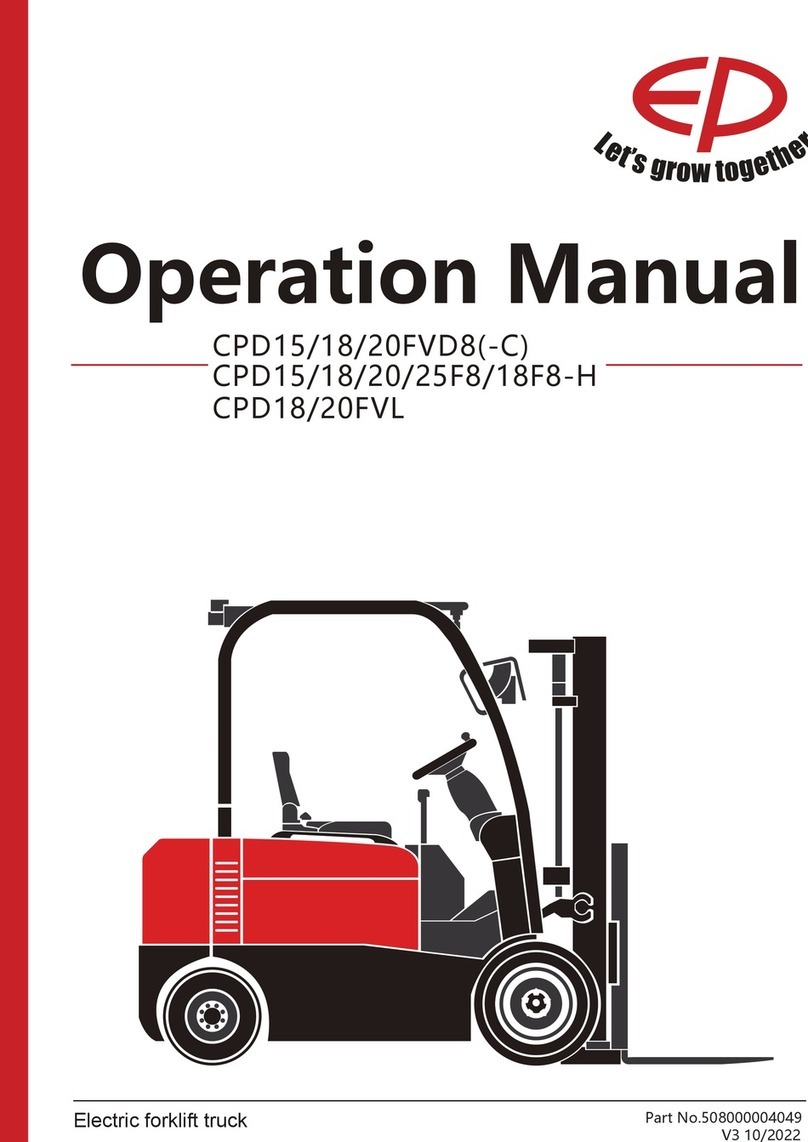
EP Equipment
EP Equipment CPD15/18/20FVD8(-C) User manual
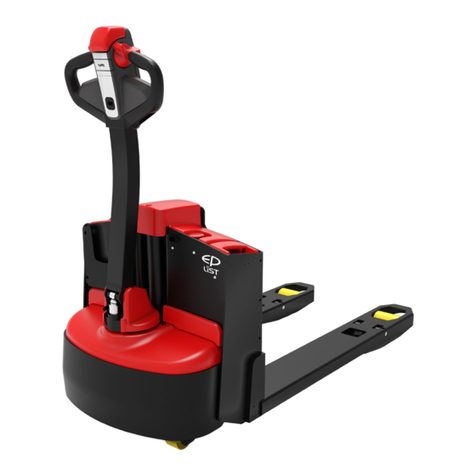
EP Equipment
EP Equipment EPL151 User manual

EP Equipment
EP Equipment JX0-30 User manual
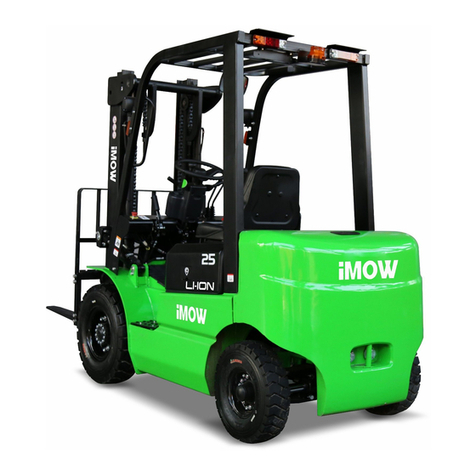
EP Equipment
EP Equipment IMOW ICE251 User manual
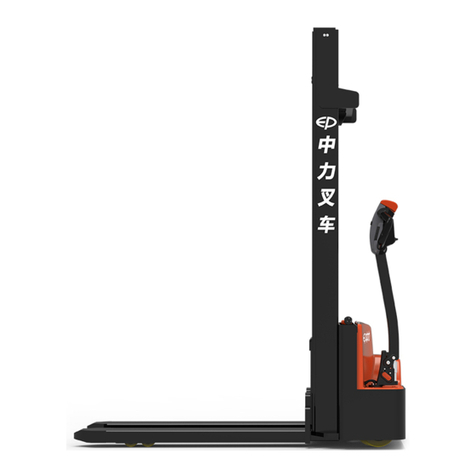
EP Equipment
EP Equipment EST121 User manual
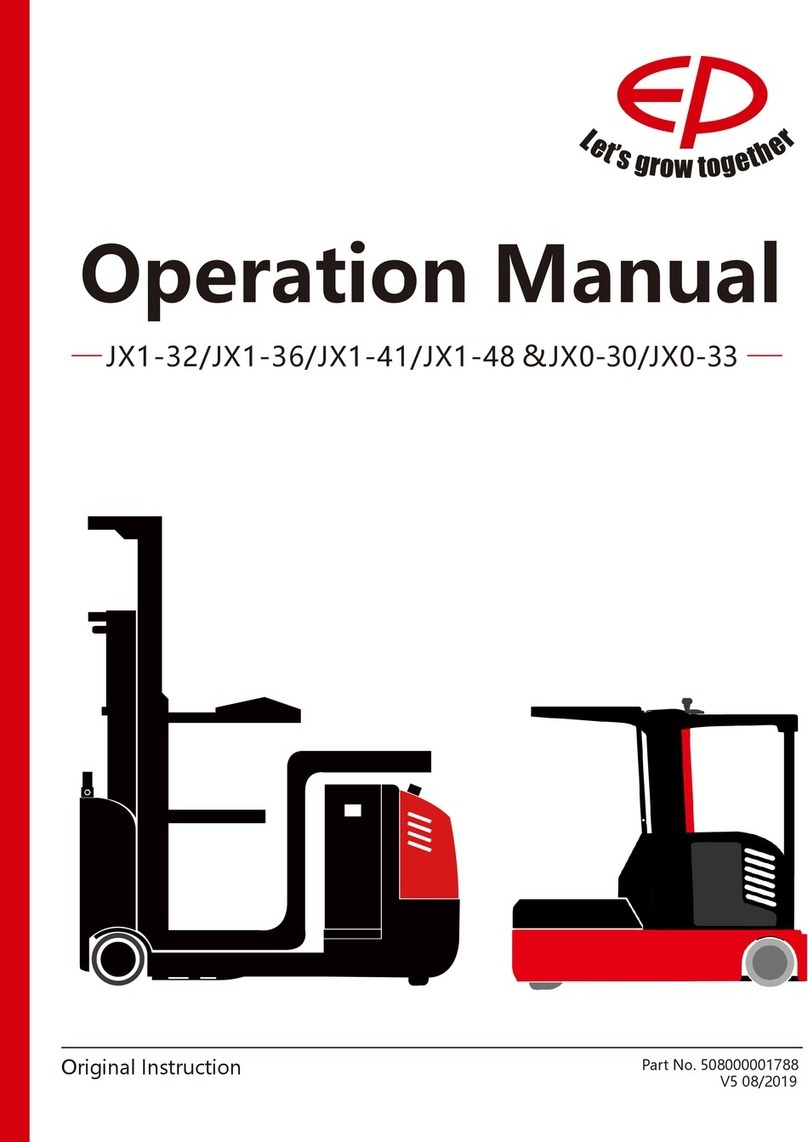
EP Equipment
EP Equipment JX1-32 User manual

EP Equipment
EP Equipment EPL153 User manual
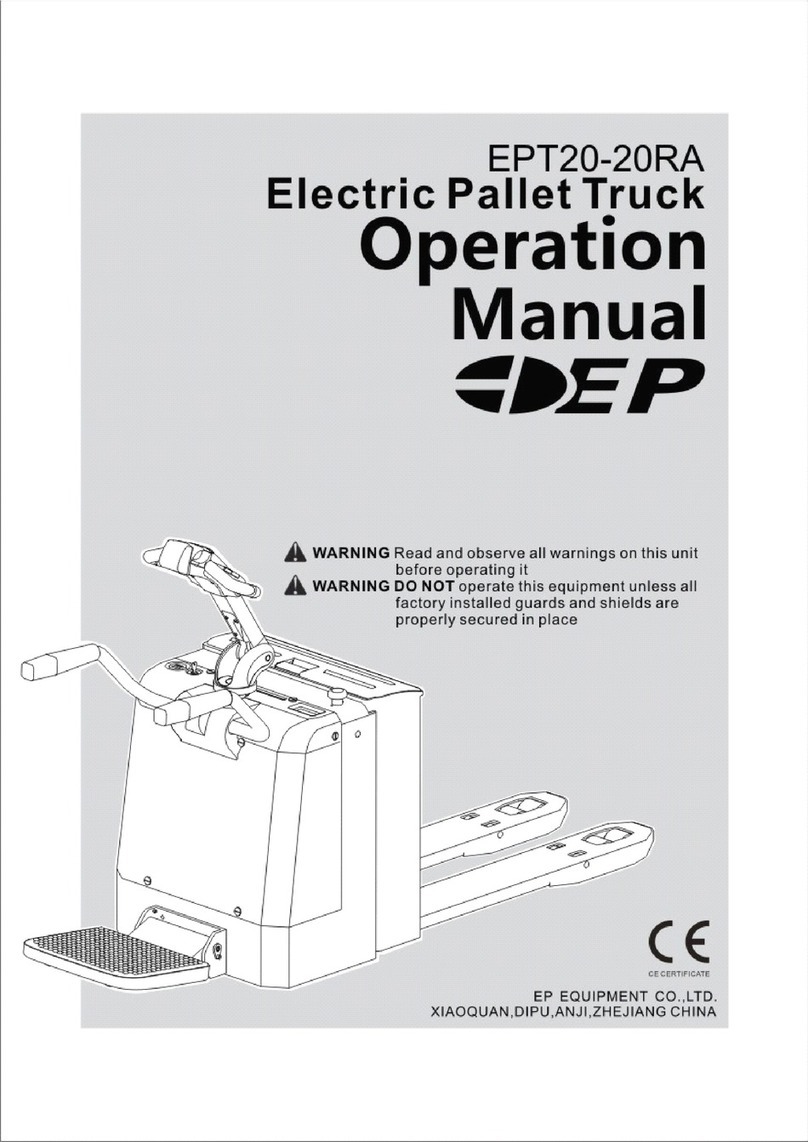
EP Equipment
EP Equipment EPT20-20RA User manual
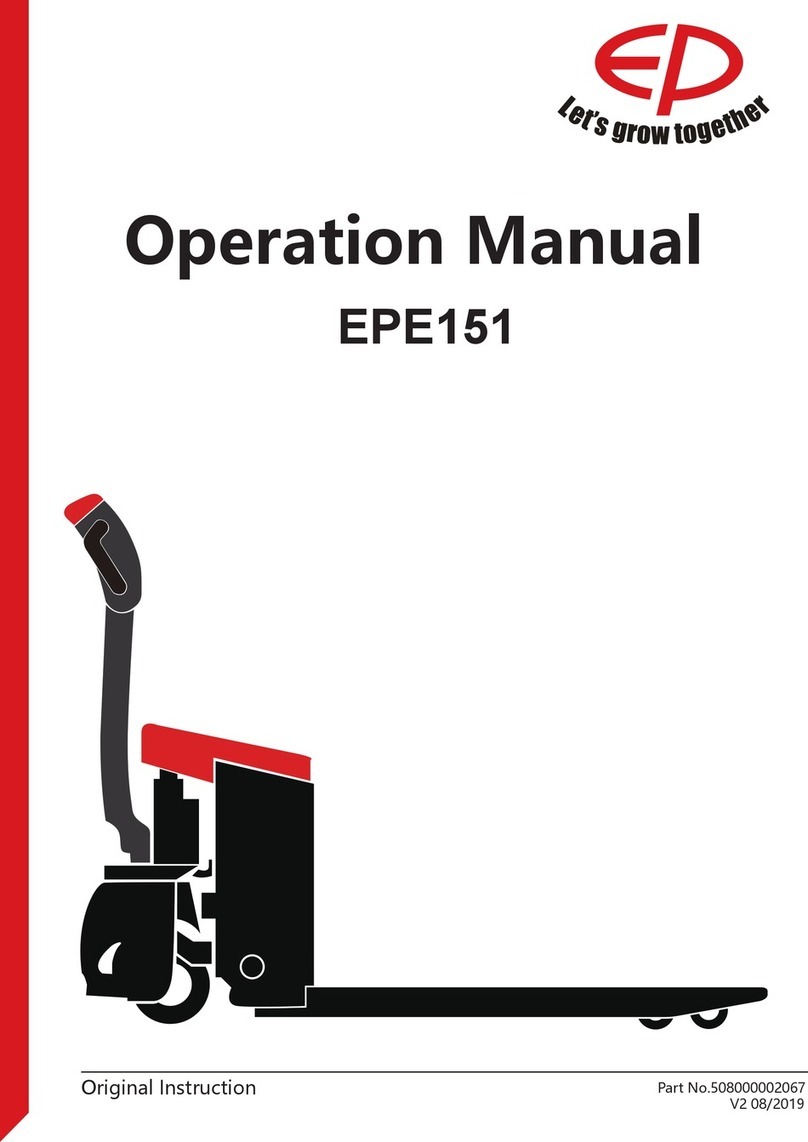
EP Equipment
EP Equipment EPE151 User manual

EP Equipment
EP Equipment EPT20-15ET User manual
